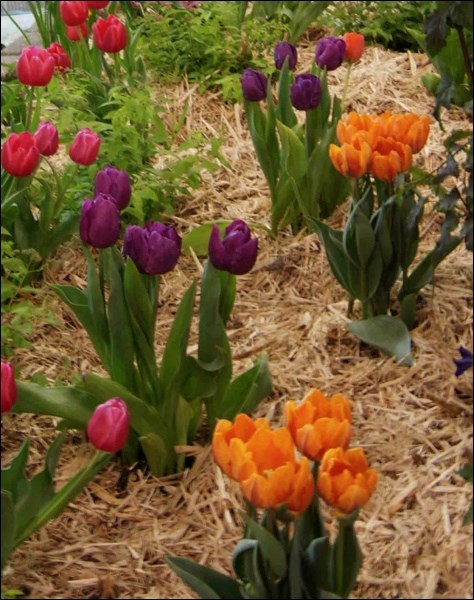Last week the column was all about lifting and storing summer flowering bulbs. This week the job of planting spring flowering bulbs who are also very hardy in our climatic zones will be featured. Spring flowering bulbs must be planted in the fall to allow the bulb to develop a good root system. These bulbs also need a cold period (winter) in order to allow their flowers to fully develop. For best results plant them well before our ground freezes – now is the perfect time! Spring flowering bulbs are inexpensive, simple to plant and require very little for care.
Size matters! When purchasing bulbs, it is important to remember that this is one instance when you truly get what you pay for. The larger bulbs of each flower type will without fail give you a better product. Take time to examine the flesh of the bulb as it should be smooth and free of any blemishes. Your favourite garden centre should have plenty of stock in now that will ensure you can enjoy the latest bulbs of your dreams come spring.
Bulbs should be planted in an area that is well-drained. The soil should be free of weeds and dug to a depth of about 12 inches (30cm). If your soil is a heavy clay soil, incorporate equal portions of coarse sand and a suitable organic matter like compost. A good rule of thumb is to incorporate a good 4 to 6 inches (10 to 20 cm) of organic matter prior to planting. Apply a standard bulb booster fertilizer (9-9-6) or bone meal at planting time to encourage a vigorous and healthy root system.
The planting depth will vary for each type of bulb, but a good rule of thumb is to plant the bulb to a depth of 3 – 4 times the width of the bulb. Therefore, if you are planting a tulip bulb that is 2 inches (5 cm) wide, it should be planted 8 inches (20 cm) deep. After planting, water the soil thoroughly and mulch the surface with leaves or grass clippings to a depth of 2 inches (5 cm).
When planting spring bulbs, you will get the best impact if you group the same type of bulb together. The bigger the grouping the larger will be the impact. Most spring flowering bulbs are low in stature. What that means from a design perspective is that they should be planted at the front of the border but also somewhere that enables you to enjoy the show on a regular basis. Spend a bit of your fall in the garden planning for spring, plant some spring flowering bulbs and enjoy the grand show in the spring!
Choose hardy stock that will survive in your climate zone. Tulips, species tulips like Tulipa tarda, scilla and crocus are your hardiest choices but in the right location daffodils, puchkinia, fritilarias and grape hyacinth will also work well. Hyacinths will be fine for zone 4 and above, depending on the species.
I have a love of all tulips. You can extend the spring season by planting a collection of early, mid and late flowering selections. Spring on the prairies is often short so play with the climate and extend every season by planting for extending the colour. Do remember that a lot of the exotic tulips are not really perennial in nature and you may need to replant annually. However, if you use some of the old tulip types like Darwin, you should be able to get lots of years of blooming tulips.
Plan for spring......plant now so you can spend the long winter anticipating the show you are creating to be enjoyed in spring.
Hanbidge is a horticulturist with the Saskatoon School of Horticulture and can be reached at 306-931-GROW(4769); by email at growyourfuture@gmail.com; facebook: @schoolofhort; twitter: @hortiuclturepat; instagram: patyplant or check out our website at saskhort.com



